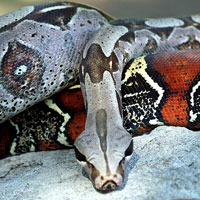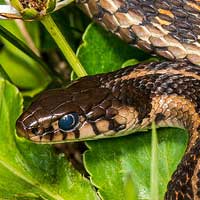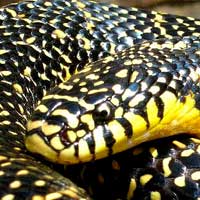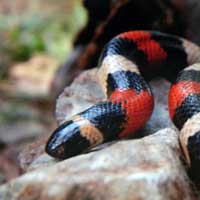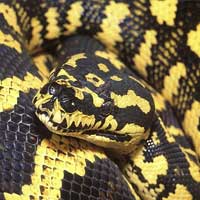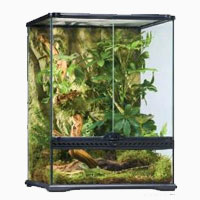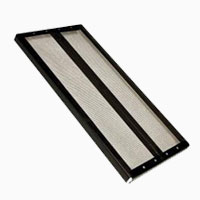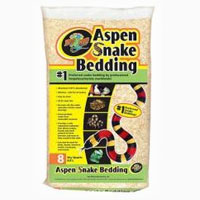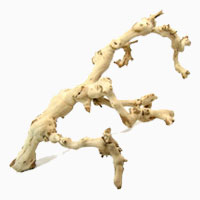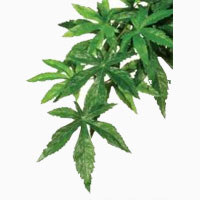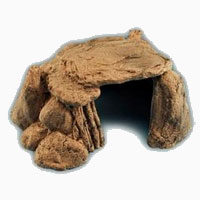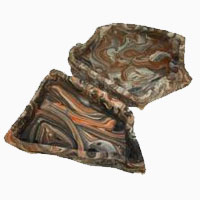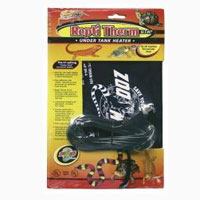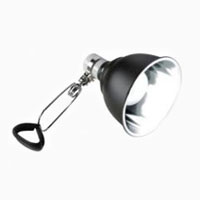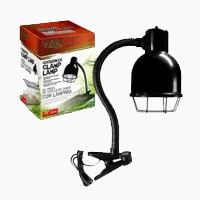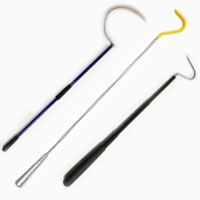Ruthven’s Kingsnake
Scientific Name: Lampropeltis Ruthveni
Share this Post
The common name for this snake is the Ruthvens Kingsnake or Queretaro Kingsnake. The scientific name is the Lampropeltis ruthveni. Their scales features twenty-three rows of dorsal and 182-196 of ventral scales. The dorsal rings number about twenty-four. Dorsally, the rings colors are black, red and white. Ventrally, the rings feature along its entire body, with a ventrally disappearing or paling of the black and red rings. It closely resembles milksnakes of some varieties, although upon closer inspection the black rings are often feature outlines of lime green within them. The white and black colors usually only consist two to three scales wide. The albino version of this snake is a prized pet snake, as it is rare in collections. The top of its head features markings of tan or red with black markings, as well as a white ring at the back of its head.
Ruthven’s Kingsnakes Are Beautiful Creatures
Facts About Ruthven’s Kingsnakes
Geographic Location
Usually found in Mexico, in the states of Durango, Jalisco, Queretaro and Michoacan.
Habitat
This species of Kingsnake is located in the Plateaus of Mexico, in upland, rocky areas.
Behavior
This species thrives well in captivity, although it is quite secretive and will require a hide box all the time. It’s juveniles are flighty, and they as well as the parents are naturally reclusive. As wild specimens, they feed on a number of rodents and lizards. While captive, these snakes fair quite well on lab rat diets, while their newborns might require pink mice that are new born. They are generally known as aggressive feeders.
Reproduction
While laying clutches of five to ten eggs a month following copulation, these eggs incubate for roughly sixty days at an approximate temperature of eighty degrees Fahrenheit. Hatchlings measure about six inches long, after a seventy five percent-fertility rate. Otherwise, the general size of hatchlings is six to seven inches and grows to measure twenty four to thirty six inches.
